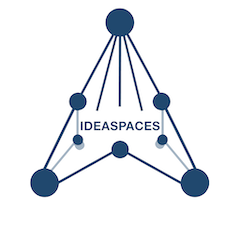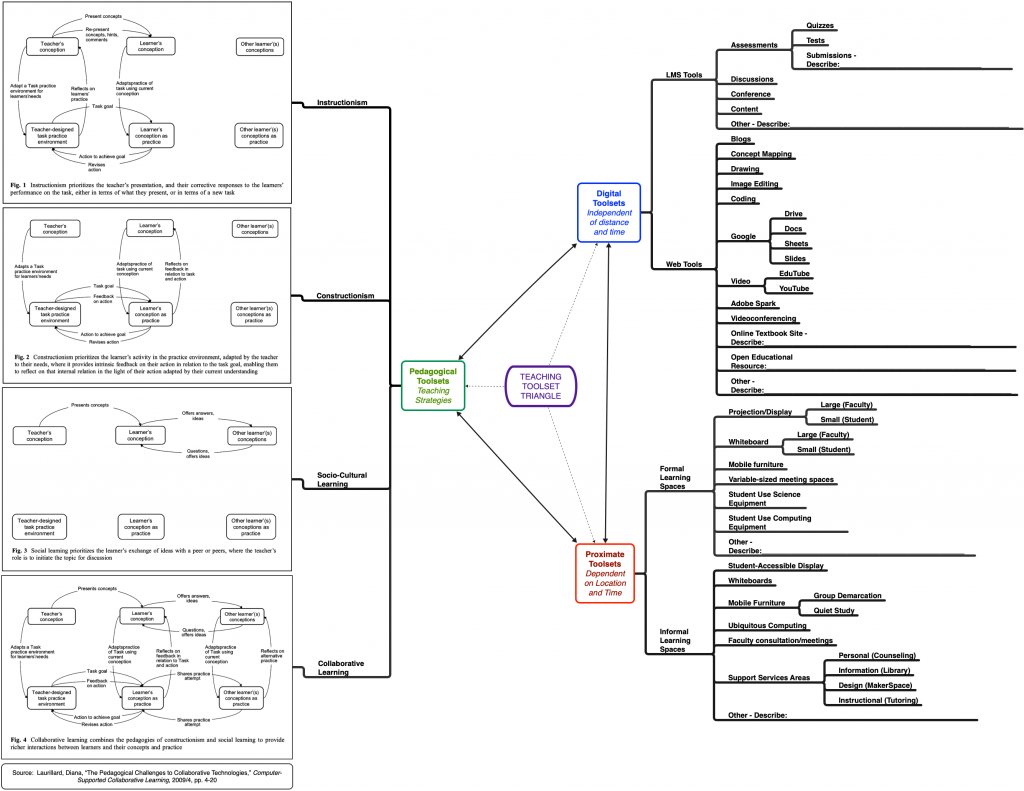The Teaching Toolset Triangle
With this site I am launching a survey to gain a broader, ethnographic understanding of how a wide range of teachers use their educational tools.
This survey is an attempt develop a mindful connection between the tools we use to do our jobs and hoped-for outcomes of our efforts, namely deep, meaningful learning in an increasingly dynamic pedagogical, technological, and economic environment.
The survey is dual purpose. The complexity and length of the survey means that it should form the basis for an ethnographic survey of how teachers perceive the tools at their disposal in conjunction with a mindful exploration of their pedagogical strategies. Therefore, it is intended first as a platform for meaningful conversations about the nature of teaching and learning within our current state of spatial and technological constraints. Second, it can form the basis for design and purchasing decisions around instructional spaces, both online and in-person. As it accumulates more data, the model will become richer in its ability to structure conversations and inform strategies.
In order to better understand instructional toolsets, I have created a value based on the four instructional methods described by Laurillard. No one teaches strictly based on one of the four modes and master teachers must use all four of them appropriately. Her framework, however, can form the basis for understanding how particular pedagogical interactions are formed and their likely outcomes. Building on this, the survey and model are attempts to understand the connection between how we teach, how we choose to communicate, and the tools we use to do so.
- TVi – Tool value for Instructionist approach – to what extent does the use of the tool bias you toward an Instructionist approach to teaching and learning?
- TVc – Tool value for Constructionist approach – to what extent does the use of the tool bias you toward a Constructionist approach to teaching and learning?
- TVsc – Tool value for Socio-Cultural approach – to what extent does the use of the tool bias you toward a Socio-Cultural approach to teaching and learning?
- TVcl – Tool value for Collaborative approach – to what extent does the use of the tool bias you toward a Collaborative approach to teaching and learning?
In the survey each of these tools is ranked on a scale of 0-4 based on the level of which the tool biases teacher and student toward or against a particular approach to teaching and learning based on the following rubric:
- 0 = Use of tool is blocks the adoption of the respective pedagogical approach
- 1 = Use of tool is largely irrelevant to the respective pedagogical approach
- 2 = Tool must be adapted to be relevant to the respective pedagogical approach
- 3 = Use of tool encourages the adoption of the respective pedagogical approach
- 4 = Use of tool requires the adoption of the respective approach
Example: Whiteboard Large (Faculty): This is a direct lineal descendent of one of the oldest instructional technologies, the blackboard, and, as such, tends to be used in the same way as the faculty display (see below) with advantages in low technical requirements but is more limited in the range of tools and creative dexterity of the instructor.
|
Tool Value Score |
Rationale |
|
TVi – 3 |
A large whiteboard at the front of the room centers attention on the faculty member. |
|
TVc – 2 |
Difficult to get all of the students in a classroom to construct their own learning experience when the only communication modality is controlled by the instructor. |
|
TVsc – 1 |
For the most part students are not empowered to utilize the board if there is only one board at the front of the room. |
|
TVcl – 1 |
Collaborative project-oriented learning is difficult when students don’t have individualized or group workspaces. A large whiteboard in the front of the room is not necessarily conducive to this approach. |
The Survey
The survey walks you through 40 physical and virtual tools and asks you to evaluate their utility to each of the four teaching modalities identified by Laurillard. It can be found here.

